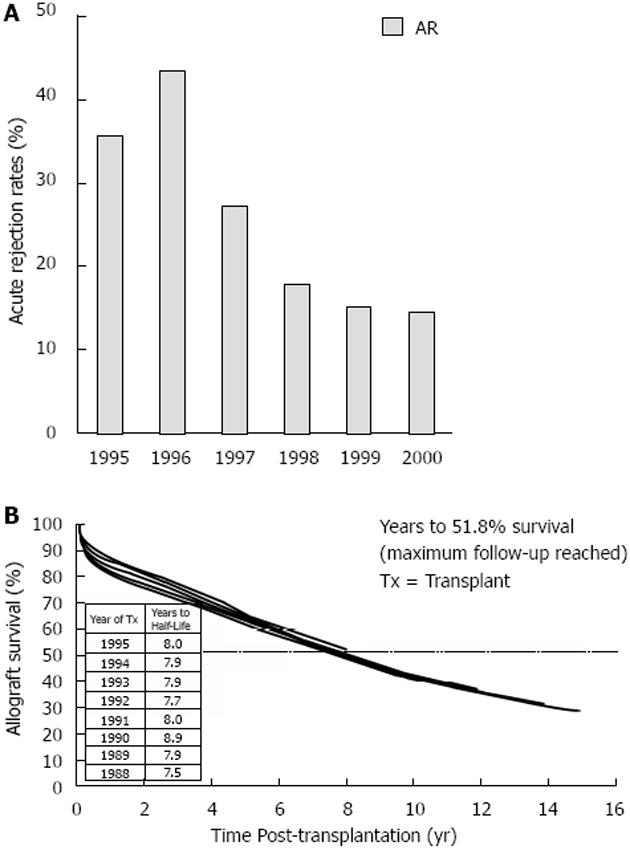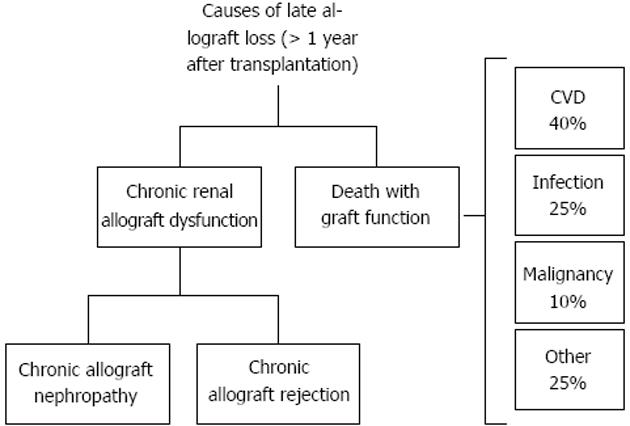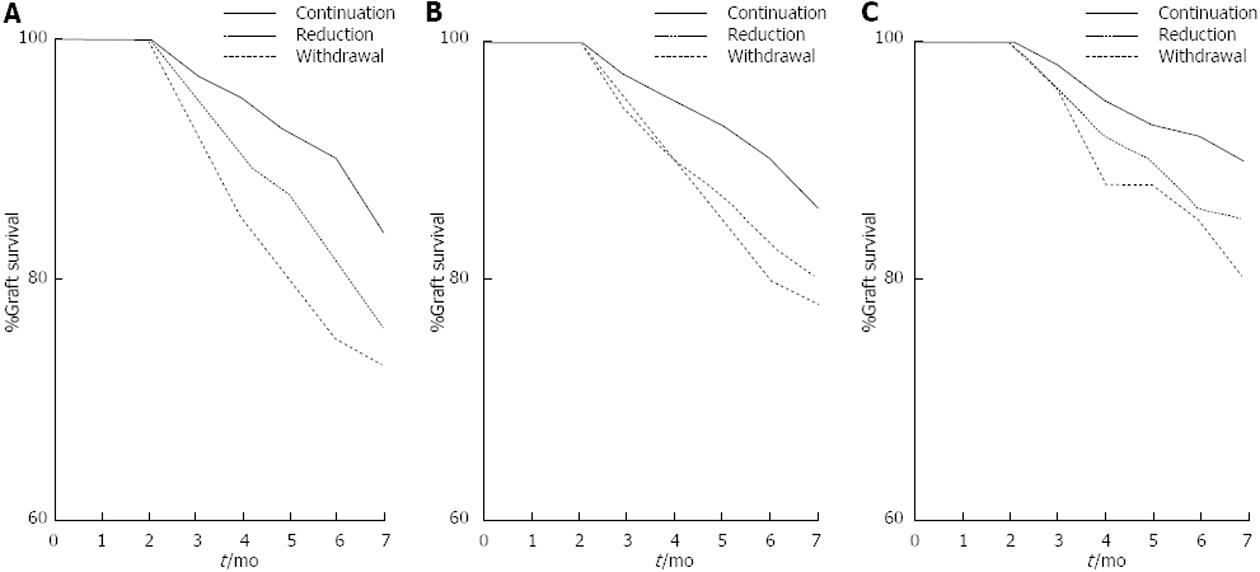Copyright
©2013 Baishideng Publishing Group Co.
World J Transplant. Jun 24, 2013; 3(2): 7-25
Published online Jun 24, 2013. doi: 10.5500/wjt.v3.i2.7
Published online Jun 24, 2013. doi: 10.5500/wjt.v3.i2.7
Figure 1 Kidney transplantation from deceased donors.
Reduction in rejection rates (A) and half life graft survival according the era (B). AR: Acute rejection.
Figure 2 Main causes of graft losses beyond 1-year after renal transplantation.
Figure 3 Pathogenesis of calcineurin inhibitors mediated nephrotoxicity (left) and morphological aspects.
TGF-β: Transforming growth factor beta; ROS: Reactive oxygen species; IF/TA: Interstitial fibrosis/tubular atrophy; CNI: Calcineurin inhibitor.
Figure 4 Collaborative Transplant Study Data.
A, B: Renal graft survival between 3 and 7 years after transplantation of graft functioning at 2-year after transplantation. Survival according continuation of calcineurin inhibitor (CNI) dosage, reduction or withdrawal. Cyclosporine (A), Tacrolimus (B); C: Collaborative transplant study (CTS) data. Renal graft survival for patients on CNI immunosuppression from 3 to 7 years after transplantation. Data related to kidneys having an optimal graft function al 2-year after transplantation. Survival according continuation of CNI dosage, reduction or withdrawal.
- Citation: Salvadori M, Bertoni E. Is it time to give up with calcineurin inhibitors in kidney transplantation? World J Transplant 2013; 3(2): 7-25
- URL: https://www.wjgnet.com/2220-3230/full/v3/i2/7.htm
- DOI: https://dx.doi.org/10.5500/wjt.v3.i2.7












